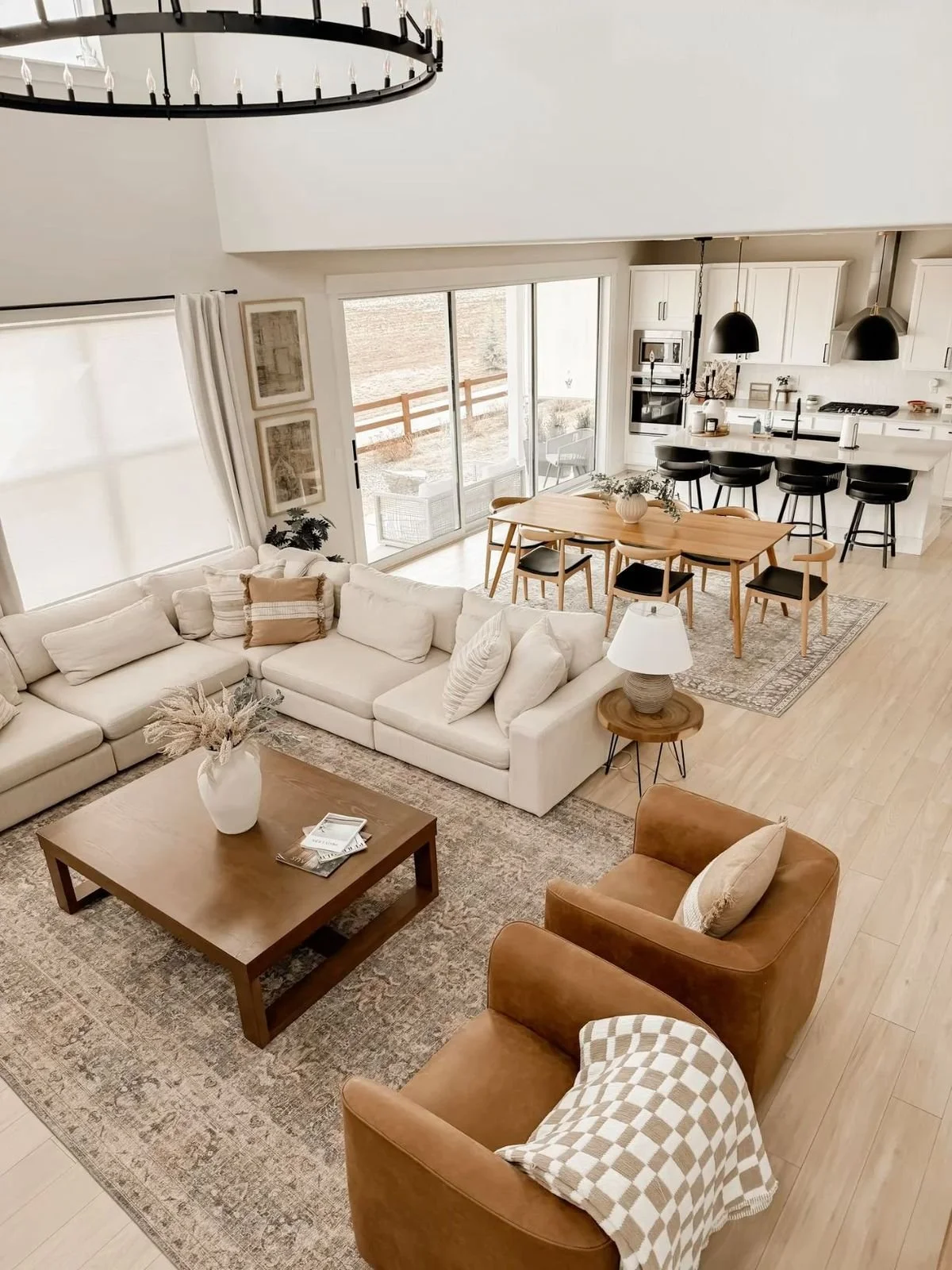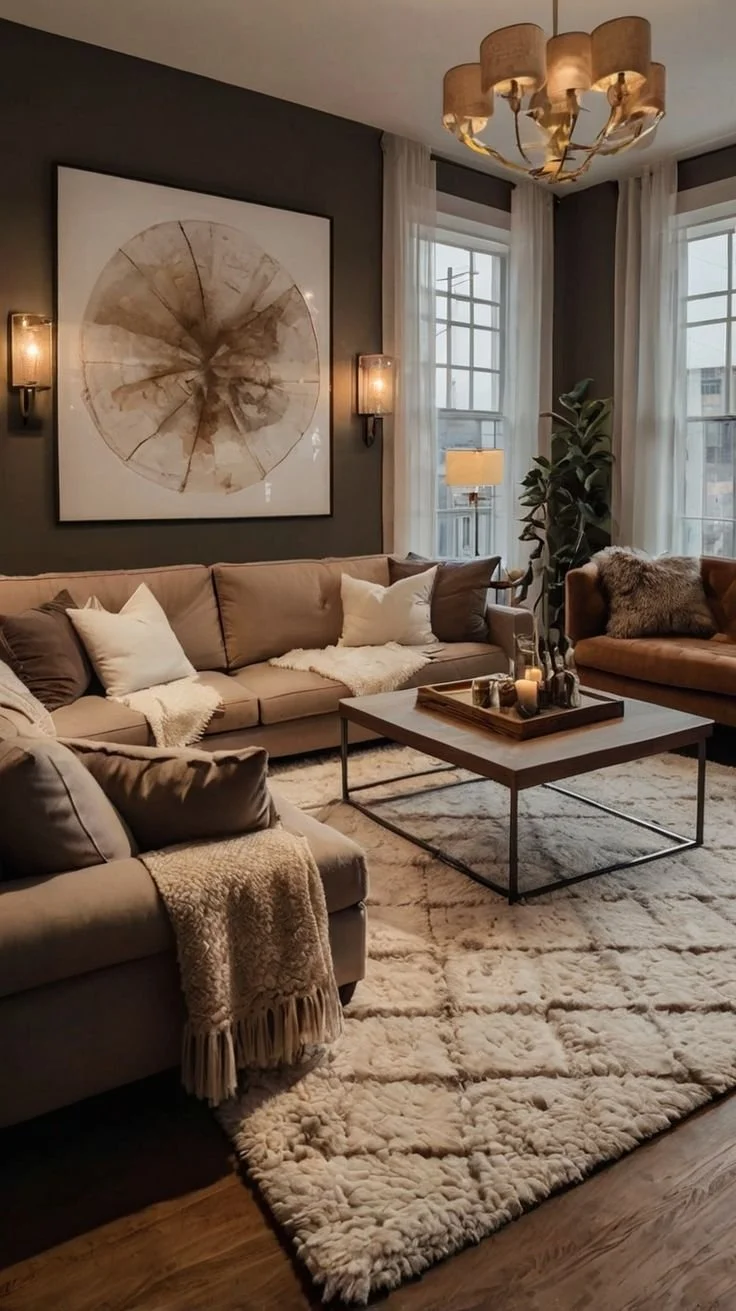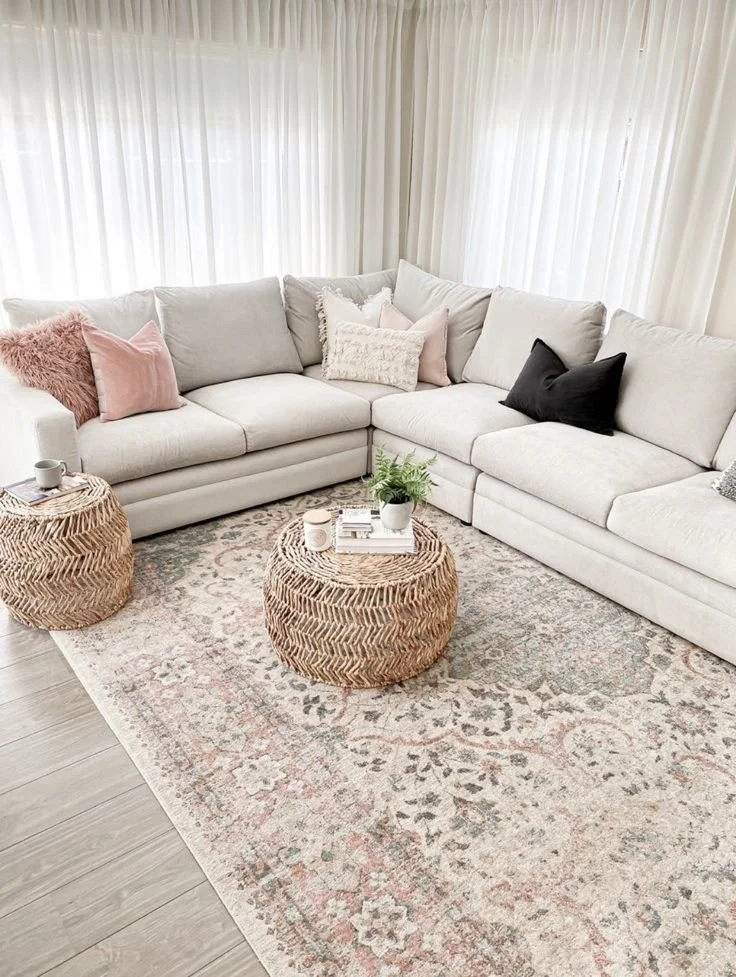How To Match Rugs With Floor Colors
Have you ever walked into a room and just… exhaled?
Not because it was perfect or styled like a magazine, but because it felt warm. Safe. Alive with soul.
I believe rugs have something to do with that.
They’re not just something you roll out for style. They’re memory-holders. Sound-softeners. Energy-grounders. They’re where your feet land when you get out of bed. Where your dog curls up while you read. Where your babies play. Where conversations unfold and life gathers.
But finding the rug—that one piece that feels right in your space, especially when you’re trying to match it to your floor color? That can feel overwhelming.
I remember one time, years ago, standing in a store aisle with my phone in one hand, a swatch in the other, and a lump in my throat. I was trying to pick a rug for our living room—a room I so badly wanted to feel like “us”—and I couldn’t find the right one. Everything either clashed or blended too much. I wanted it to feel right, not just look right.
And that’s what this guide is. It’s not about perfection—it’s about connection. About helping you choose rugs that match your floors in a way that brings your home (and your heart) into harmony.
If you’ve ever wondered how to match rugs with floor colors, this post is for you. And I hope it makes the process feel lighter, easier, and a little more magical.
A cozy rug anchors the living room, inviting calm and comfort as warm sunlight fills the space.
How To Match Rugs With Floor Colors
Design, at its core, is emotional. Your floors anchor the space. And rugs? They give it personality, warmth, memory. Matching the two is less about rules and more about rhythm.
So if you’re standing in your living room or dining room, wondering what to choose, come sit beside me for a minute. Let’s walk through this together.
Have You Ever Walked In and Thought, “Something’s Off”?
That’s often where rug-floor disconnect shows up first. The undertones of your floor—whether warm like honey or cool like slate—set the tone for the room. Rugs featuring complementary colors can soften, support, or bring contrast.
Warm floors (think cherry, mahogany, golden oak) crave earthy, sun-soaked rug tones—clay, rust, beige, flax.
Cool floors (like gray, espresso, or concrete) feel most at ease with warmth—camel, ivory, dusty pink, even soft olive.
Neutral floors (natural oak, whitewashed woods) are open to play—layering neutral color rugs, natural fiber rugs, or a patterned rug can all work beautifully.
Clay flat weave rug in living room with golden oak floors - Image sourced from Pinterest
I always say—hold up a swatch, step back, and notice how your body reacts before your brain jumps in. That’s where your true yes lives.
Do You Remember the First Time You Noticed Texture?
Maybe it was the worn wood beneath your grandmother’s rocker. The cool tile under your bare feet in the kitchen. Floors have a story—and when you choose a rug, you’re layering in a new one.
The key? Vary the scale.
If your floor is busy or dark, choose a flat weave or sisal rug in a neutral color to create calm. If your floor is smooth or subtle, bring in texture with a wool rug or a patterned rug to add dimension and life.
Patterned wool rug over smooth white oak in an open floor plan - Image sourced from Pinterest
Let them balance each other. Let them dance—especially in open floor plans, where contrast is everything.
Have You Ever Stepped Onto a Rug That Felt Like a Hug?
That’s what a natural fiber rug does. Sisal, jute, seagrass—there’s something about the feel underfoot that just grounds you. I love layering them under vintage flat weaves or letting them shine on their own, especially in a dining space or hallway.
They’re humble but elegant. And they go with everything.
Sisal rug layered with vintage runner in a dining room - Image sourced from Pinterest
Sometimes, I think natural fiber rugs are like old friends. Not flashy, but always there. Always comforting.
Let Each Room Speak for Itself
Think back to the last time you lingered in a living room because it felt just right. Or the way a certain dining room made you want to sit a little longer, even after the plates were cleared.
That’s what rugs can do when they match both the function and floor color of a space.
A wool rug might feel perfect in a living room, softening sound and inviting stillness.
A flat weave rug makes sense in the dining room—easy to clean, easy to love.
And in an open concept space, you can use rugs to gently divide areas while still telling one unified story.
A wool rug in a living room - Image sourced from Pinterest
In open floor plans, you can even mix and match textures and rug styles, as long as the tones and mood stay in gentle conversation.
Let your rooms speak with intention. Different rug styles will offer different energies depending on how you use each space.
Design isn’t just about what something looks like. It’s about how it feels to live with it.
What Color Rug for Dark Floors
Dark floors can feel moody, rich, and deep. But without the right rug, they can also feel heavy. Let’s lift them.
Espresso or Black Wood Floors
These dramatic floors love contrast. Try a wool rug in ivory or a patterned rug featuring light neutral colors. A soft geometric flat weave can add movement, elegance, and a touch of visual interest without overwhelming the space.
🖼️ [Suggested photo: Cream and sand-toned rug on espresso floors under linen sofa]
Cream and sand-toned rug on espresso floors under linen sofa - Image sourced from Pinterest
Cherry or Mahogany Floors
There’s something nostalgic about cherry wood. I remember a house I visited once—sunlight streaming across the cherry floor—and how the rust-toned rug caught the light just right. The warmth, the glow… it all felt like a quiet embrace.
Pair these floors with rugs in rust, ochre, olive, deep beige, or muted gold—tones that echo the floor’s natural depth and create beautiful visual harmony.
Deep beige wool rug on cherry floors - Image sourced from Pinterest
What Color Rug for Light Floors
Light floors open a space up—but they still need grounding. The right rug can offer that.
Blonde or Natural Oak
These floors are forgiving and versatile. They welcome natural fiber rugs, area rugs, layered looks, or even playful patterns.
Try a sisal rug in tan or oatmeal, or add a pop with a flat weave in soft olive or rust.
Layered jute and vintage rug under oak table - Image sourced from Pinterest
Whitewashed or Gray
I used to think gray floors felt cold. But then I learned how much warmth you can bring in with the right rug. Think blush, faded rust, warm beige. Even soft mustard if you’re feeling adventurous.
Faded pink and beige rug on whitewashed floors - Image sourced from Pinterest
Concrete or Stone
Concrete floors have this beautiful rawness. But they crave softness. A Moroccan rug, a tribal flat weave, or a cozy wool rug can completely change the energy.
Wool rug on concrete floors - Image sourced from Pinterest
If you’re drawn to rich textures, earthy tones, and the kind of soulful warmth that makes a space feel alive, you’ll love this post I wrote on Modern Spanish Style Interior Design. It’s full of grounded inspiration—especially if you’re working with concrete or stone floors and want to bring in warmth through your rugs, textures, and layers. I still revisit that style often when I need a reminder of how bold and soft can live beautifully together.
Final Thoughts
Sweet friend, if you’re here because you want your home to feel more like you—you’re already doing something right.
Matching rugs with floor colors is not about getting it perfect. It’s about listening. Feeling. Following that quiet pull toward what feels grounded, joyful, connected.
I hope this guide helped you remember that design isn’t just in the choices—it’s in the moments. The memories. The way your bare feet feel when they hit that wool rug in the morning, or how your guests linger in your dining room a little longer because the space just holds them.
So the next time you’re choosing a rug, don’t ask yourself, Does this match?
Ask yourself, Does this feel like home?
And if it does, that’s your answer.
Live on Purpose. Live on Frequency.
Jaclyn Steele Thurmond










